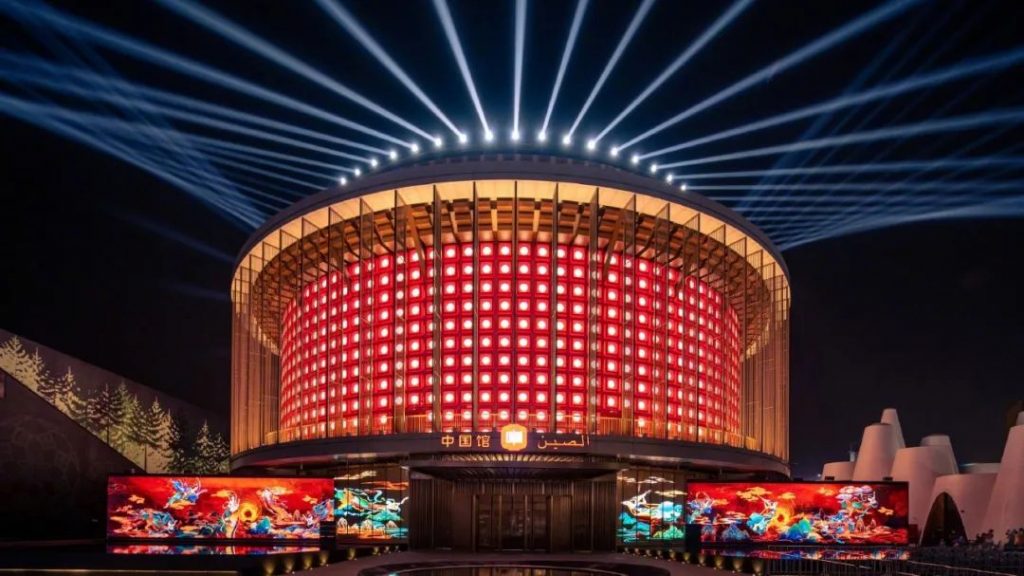LED encapsulation technologies refer to the different methods and materials used to protect and package LED chips. Here are some common LED encapsulation technologies, along with their differences, pros, and cons:

Dubai World Expo – China Pavilion
Epoxy Encapsulation:
Description: Epoxy resin is commonly used to encapsulate LED chips. It is applied as a liquid and then cures to a solid state, forming a protective layer around the chip.
Pros: Epoxy is cost-effective, transparent, and provides good protection against moisture and mechanical stress. It is widely used in LED manufacturing.
Cons: Epoxy has limited thermal conductivity, which can impact heat dissipation. It may also yellow over time due to UV exposure, affecting the color rendering of the LED.
Silicone Encapsulation:
Description: Silicone-based materials are used for encapsulating LED chips. They are applied as a liquid or gel and then cured to form a flexible and transparent layer.
Pros: Silicone offers excellent thermal stability, high-temperature resistance, and good resistance to UV light. It provides better heat dissipation compared to epoxy and does not yellow over time.
Cons: Silicone encapsulation is generally more expensive than epoxy. It can be less transparent than epoxy, which may affect light transmission efficiency.
Ceramic Encapsulation:
Description: Ceramic materials, such as alumina or aluminum nitride, are used for encapsulating LED chips. Ceramic packages provide high thermal conductivity and excellent mechanical strength.
Pros: Ceramic encapsulation offers superior thermal management, enabling efficient heat dissipation. It provides enhanced protection against thermal stress and mechanical damage.
Cons: Ceramic packages are typically more expensive compared to epoxy or silicone. They may not be necessary for all LED applications, especially low-power LEDs.
Glass Encapsulation:
Description: Glass is used as an encapsulation material for high-power LEDs. It provides excellent optical properties, high thermal conductivity, and strong protection.
Pros: Glass encapsulation offers high transparency, superior thermal management, and exceptional durability. It can withstand harsh environmental conditions and UV exposure.
Cons: Glass encapsulation is expensive and more challenging to manufacture compared to other materials. It is primarily used in high-end LED applications.
Quantum Dot Encapsulation:
Description: Quantum dots, which are nanoscale semiconductor particles, are used as a color conversion layer in LED packaging. They convert the blue light from the LED chip into different colors, enhancing color accuracy and efficiency.
Pros: Quantum dots provide high color qauality, wide color gamut, and improved energy efficiency. They offer precise color control and can achieve high color rendering index (CRI).
Cons: Quantum dot encapsulation is a more advanced and specialized technology. It may involve additional manufacturing complexity and cost compared to traditional encapsulation methods.
The choice of LED encapsulation technology depends on factors such as cost, thermal management requirements, desired optical properties, and application-specific needs. Manufacturers often consider a balance between performance, cost, and reliability when selecting the appropriate encapsulation method for their LED products.